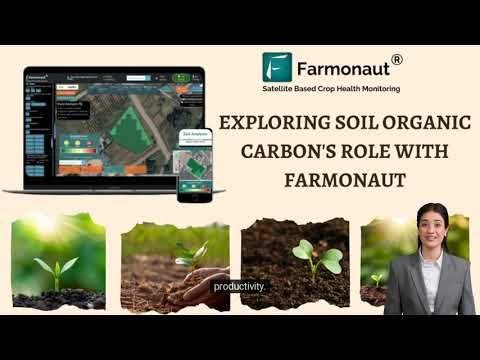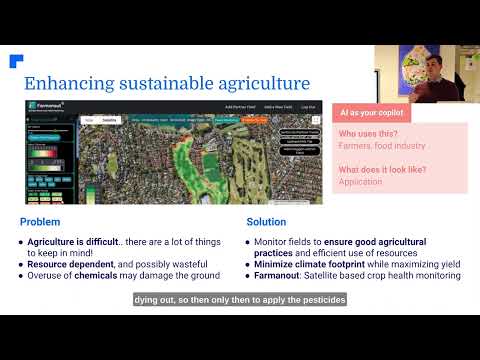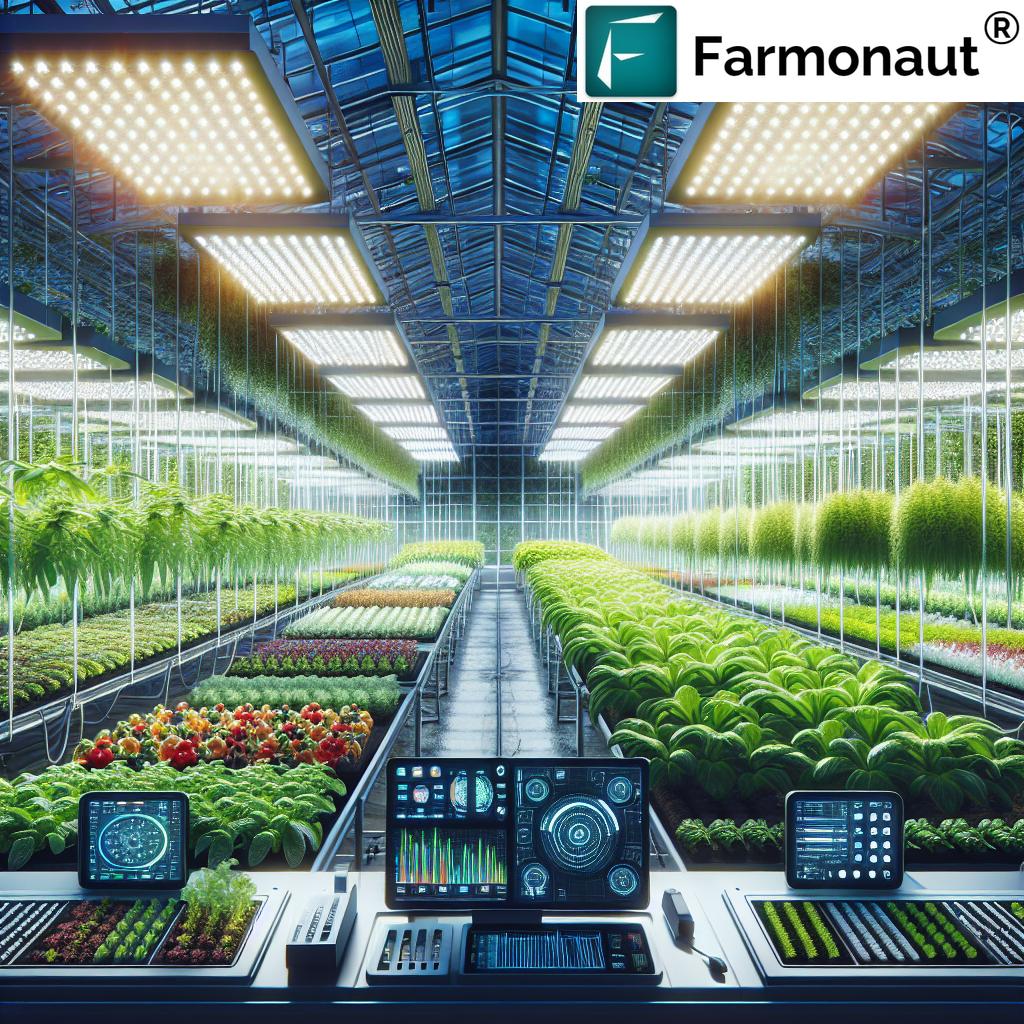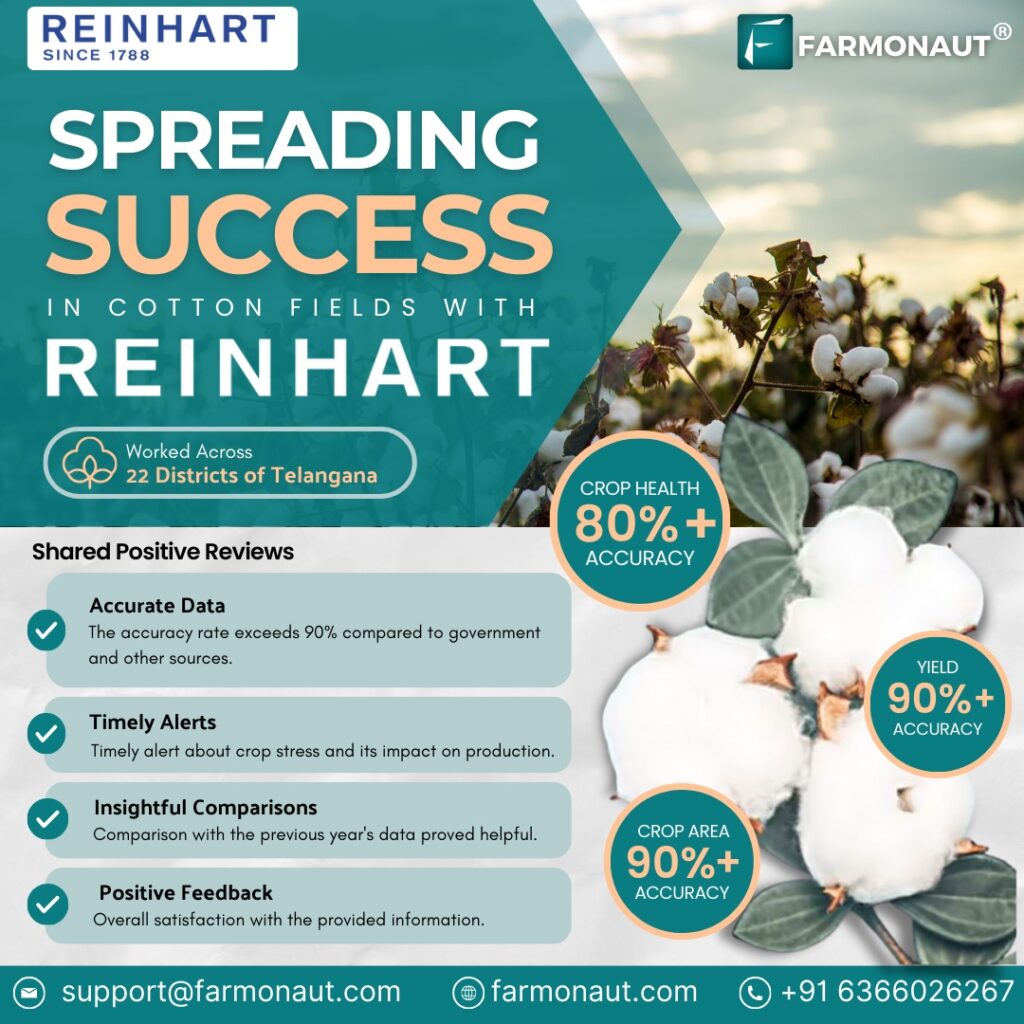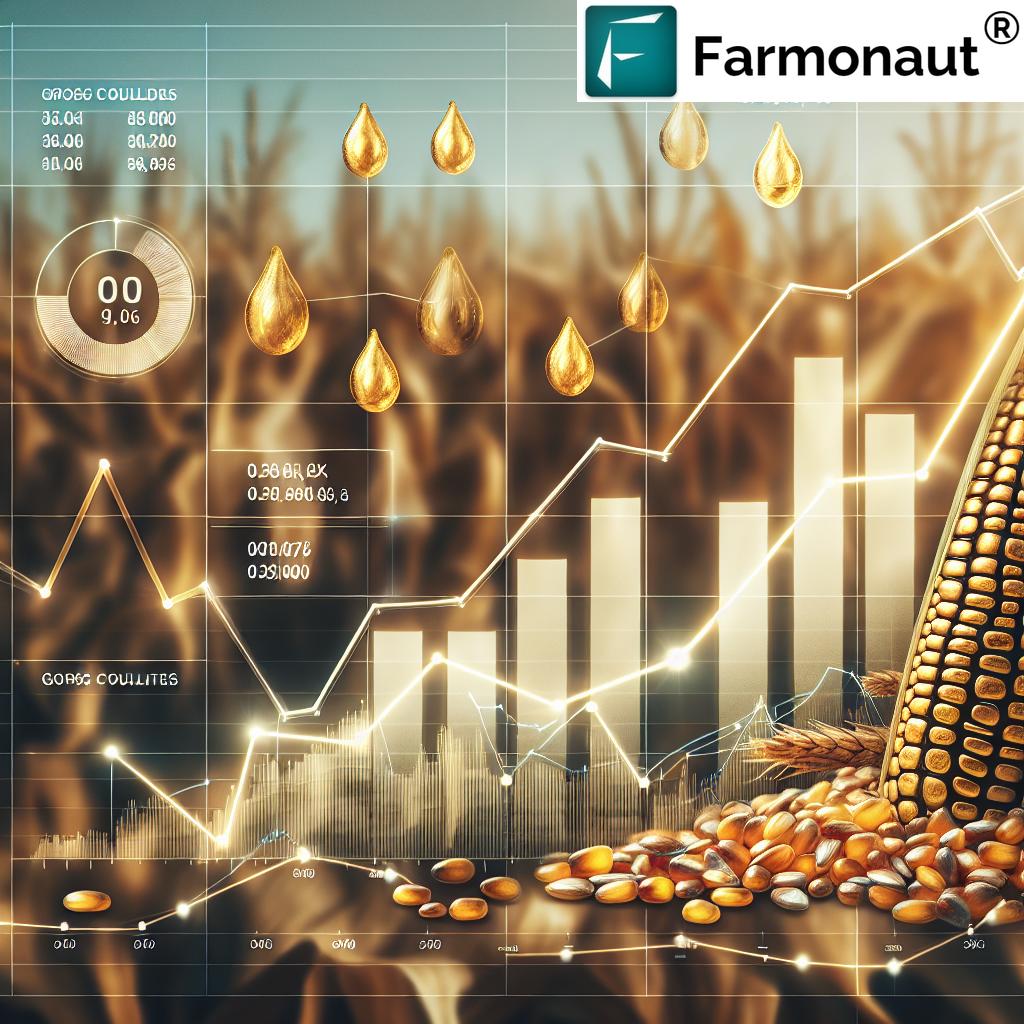7 Regenerative Farming Practices That Transform Soil!
“Cover cropping can increase soil organic matter by up to 21% in just five years.”
Table of Contents
- Introduction to Regenerative Agriculture and Key Principles
- 7 Regenerative Farming Practices That Transform Soil
- Comparative Table: Impact of Regenerative Practices
- Key Benefits of Regenerative Agriculture
- Challenges and Considerations in Adoption
- The Role of Farmonaut in Regenerative Farming
- Frequently Asked Questions
- Conclusion: Building Sustainable Farm Ecosystems Together
What is Regenerative Agriculture? Core Principles for Soil Health Improvement
Regenerative agriculture is a forward-thinking approach to farming that goes beyond conventional sustainability goals. Our aim is not just to sustain but to actively restore soil health, increase biodiversity, and rejuvenate our agricultural ecosystems. At the core, regenerative agriculture uses nature-based solutions such as cover cropping, reduced tillage, crop rotations, and more, to build resilient, productive, and sustainable farming systems.
By leveraging regenerative practices, we as farmers and custodians of the soil can transform depleted fields into vibrant, living soils teeming with biodiversity and nutrients. These holistic strategies not only enhance farm productivity but also contribute to carbon sequestration, climate mitigation, and long-term economic resilience for our communities.
Meta focus keyword use: “regenerative agriculture” | “soil health improvement” | “sustainable farming practices”
Core Principles of Regenerative Agriculture
- Minimizing Soil Disturbance: Reducing tillage preserves soil structure, retains valuable organic matter, and maintains beneficial organisms like earthworms and microbes. This principle of minimum disturbance enhances water infiltration and helps shield soils from erosion.
- Maintaining Permanent Soil Cover: Using cover crops, mulch, and crop residues ensures soil surfaces are protected from environmental stress, water loss, and weed invasion, leading to better soil health improvement and resilience.
- Enhancing Biodiversity in Agriculture: We implement diverse crop rotations, intercropping, and build habitat for beneficial organisms to bolster the entire ecosystem. Biodiversity strengthens pest management, nutrient cycles, and system productivity.
- Keeping Living Roots in the Soil: Living roots feed soil microbes and store carbon, stabilizing soils and perpetuating nutrient cycles all year round.
- Integrating Livestock Into Cropping Systems: Rotational grazing and inclusion of animals enable nutrient recycling through manure, reduce weed pressure, and improve overall soil fertility.
- Incorporating Agroforestry Systems: The use of trees and shrubs in fields (e.g., windbreaks, shelterbelts, food forests) increases biodiversity, sequesters carbon, and supports microclimates suitable for healthier crop growth.
- Recycling Organic Amendments and Farm Waste: Composting of waste materials returns vital nutrients to the soil, helps suppress disease, and reduces dependency on synthetic fertilizers.
“Regenerative farming boosts on-farm biodiversity by as much as 30% compared to conventional methods.”
The 7 Regenerative Farming Practices That Transform Soil
Let’s explore each transformative practice and how it supports soil health, ecosystem resilience, and sustainable agriculture success.
-
1. Cover Cropping: Maximizing Soil Health Improvement
What It Is: Cover cropping involves planting specialized crops (legumes, grasses, brassicas) during fallow or between main crop cycles to maintain continuous ground cover. These plants are not necessarily grown for harvest but for the soil benefits they deliver.
Regenerative Benefits:
- Protects soil from erosion, heavy rain, and wind, greatly reducing topsoil loss and runoff.
- Boosts organic matter content by as much as 21% in five years, enhancing structure and nutrient availability.
- Captures and recycles excess nutrients, preventing washout and groundwater contamination.
- Suppresses weed populations, minimizing the need for herbicide use.
- Improves water retention, infiltration, and resilience to drought.
Cover Cropping Benefits: A resilient, living mulch layer preserves the integrity of our soils, keeps roots alive, supports beneficial soil organisms, and sets a regenerative foundation for all our farming endeavors.
-
2. Crop Rotation Techniques: Cycle for Soil Resilience
What It Is: Crop rotation involves a deliberate sequence of planting different crops on the same fields across seasons or years. Typically, diverse plant families are alternated—such as legumes, cereals, root crops, oilseeds—to break pest and disease cycles and optimize nutrient balancing.
Regenerative Benefits:
- Reduces build-up of crop-specific pests and diseases by disrupting their life cycles.
- Enables balancing of soil nutrients, with deep-rooted crops accessing lower soil layers and fixing crops (like legumes) enriching nitrogen supplies.
- Prevents soil compaction through alternating rooting systems.
- Supports higher long-term yields and system diversification.
Crop Rotation Advantages: By using crop rotation techniques, we maintain year-to-year fertility, avoid declines in productivity, and reduce the dependency on chemical inputs.
-
3. No-Till and Reduced Tillage Farming Methods
What It Is: No-till or reduced tillage involves planting crops directly into minimally disturbed or undisturbed soil. Instead of plowing or turning fields, seeding equipment opens narrow slits for planting seeds.
Regenerative Benefits:
- Preserves the existing soil structure, maintaining the living networks of microbes and earthworms.
- Reduces fuel and labor costs compared to intense tillage work.
- Boosts organic matter, as crop residues are left on the surface to decompose slowly.
- Increases water infiltration, minimizes soil erosion, and supports carbon sequestration in agriculture.
No-Till Farming Methods: These approaches not only save costs, but also are at the heart of long-term soil restoration by promoting vibrant, living soils.
-
4. Integrating Livestock Into Cropping Systems
What It Is: Integration of grazing animals into crop fields or pastures creates synergistic cycles. Rotational grazing involves moving livestock to fresh paddocks, allowing pastures to regenerate and minimizing compaction and overgrazing.
Regenerative Benefits:
- Livestock manure enriches the soil with organic nutrients, increasing fertility and microbial life.
- Animals can utilize cover crop residues, breaking pest cycles, and returning nutrients to the ecosystem via manure.
- Reduces weed and pest populations naturally, minimizing reliance on synthetic chemicals.
- Improves overall farm productivity by closing nutrient cycles and supporting robust yields.
Integrating Livestock: When well-managed, this practice is one of the most powerful tools for nutrient recycling and ecosystem balance in regenerative agriculture.
-
5. Agroforestry Systems: Trees for Sustainability and Resilience
What It Is: Agroforestry combines agricultural production with the deliberate planting and management of trees and shrubs in fields, hedgerows, and boundaries.
Regenerative Benefits:
- Trees act as windbreaks, reducing erosion and maintaining moisture in soils.
- Deep-rooted species enhance nutrient and water cycling, bringing up subsoil minerals for crop use.
- Agroforestry buffers fields against extreme temperatures and drought.
- Increases aboveground and belowground biodiversity, supporting wildlife, pest predators, and pollinators.
- Additional income streams from tree crops, timber, and products diversify farm resilience and profitability.
Agroforestry Systems: By integrating the vertical layer of trees, our farms become more climate-resilient, productive, and environmentally sound.
-
6. Applying Organic Amendments and Composting
What It Is: Recycling farm waste, manure, and plant residues into compost enriches soils, boosts microbiome health, and fosters nutrient cycling. Application can be by surface spreading, in-row banding, or integrated into seeding systems.
Regenerative Benefits:
- Composting retains nutrients and suppresses diseases, improving soil structure and water holding capacity.
- Reduces costs and environmental risks related to disposal of unprocessed farm waste.
- Helps release nutrients slowly throughout the growing season, reducing volatility and losses.
Organic Amendments: This regenerative effort closes the nutrient loop on the farm, reducing reliance on synthetic fertilizer inputs and improving overall sustainability.
-
7. Integrated Pest Management (IPM) With Biodiversity
What It Is: IPM in a regenerative context focuses on using crop diversity, natural predators, and ecological engineering to keep pest populations below damaging levels, thus preserving ecosystem balance.
Regenerative Benefits:
- Reduces or eliminates chemical pesticide use, which protects beneficial insects, pollinators, and soil organisms.
- Encourages birds, bats, and beneficial arthropods by providing habitats (hedgerows, shelterbelts, cover crops).
- Improves long-term pest resistance by breaking mono-cropping cycles and increasing crop system diversity.
Integrated Pest Management: A core component for healthy, diverse, and resilient farm ecosystems—IPM complements all other regenerative practices.
Explore More: Farmonaut Carbon Footprinting Tools
Understanding the impact of carbon sequestration in agriculture is crucial. With Farmonaut’s Carbon Footprinting Solution, farmers and agribusiness leaders can track real-time carbon metrics, set sustainability benchmarks, and comply with environmental standards, making regenerative practices measurable and more rewarding.
Comparative Table: Summary of Regenerative Farming Practices & Their Impact
| Practice Name | Description | Estimated Impact on Soil Health | Biodiversity Benefit (Estimated % Increase) |
Potential Yield Improvement (Estimated %) |
|---|---|---|---|---|
| Cover Cropping | Planting non-harvested crops to cover soil between main crops | Soil organic matter +20%, erosion −90% | +27% | +12% |
| Crop Rotation | Altering crops/families each season | Improved nutrient cycling, pest cycles reduced | +18% | +8% |
| Reduced/No-Tillage | Minimal soil disturbance when planting | Soil structure +18%, water retention +35% | +12% | +10% |
| Agroforestry | Integrating trees/shrubs in fields | Organic matter +16%, reduced compaction | +24% | +15% |
| Organic Amendments & Compost | Applying composted farm waste/manure | Nutrient cycling +23%, microbial activity +30% | +17% | +7% |
| Integrated Pest Management | Ecological control, habitat for beneficials | Soil food web balance +15% | +22% | +5% |
| Rotational Grazing | Frequent movement of animals on pastures | Nutrient cycling +25%, compaction −40% | +30% | +10% |
*Data is based on leading research estimates and may vary by local soil, climate, and management intensity.
Enable Transparency and Resource Management
- Traceability Solutions by Farmonaut — Assure your crop’s journey from field to table is secure and verified. Our blockchain-powered solutions bring trust and transparency to agricultural products, a critical aspect for organic and regenerative value chains.
- Fleet and Resource Management — Optimize use of your agricultural machinery, cut down on operational waste, streamline costs, and boost on-farm efficiency for sustainable farming practices at scale.
- Satellite-Based Verification for Crop Loan & Insurance — Simplify and de-risk your access to farm finance with precise, satellite-driven verification supporting faster approvals and transparency.
- Large-Scale Farm Management Solutions — Designed for agribusinesses and cooperatives, Farmonaut helps track and manage vast fields and crop cycles for optimal productivity and cost savings.
Key Benefits of Regenerative Agriculture Practices
- Soil Health Improvement: Enhanced nutrient cycling, organic matter content, and stable soil structure enable sustainable yield increases and greater resilience against drought, pests, and disease.
- Boosted Biodiversity in Agriculture: Integration of multiple crops, cover plants, livestock, and trees increases system diversity by up to 30%, supporting pest predators, pollinators, and soil organisms.
- Carbon Sequestration in Agriculture: Healthier soils, trees, and microbial life absorb and store atmospheric carbon, reducing farm carbon footprint and mitigating climate impacts.
- Optimal Water Infiltration and Retention: Mulched soils and permanent cover improve infiltration up to 35%, reduce runoff, and make farm systems more drought-proof.
- Economic Resilience: Diverse rotations, reduced input costs, and differentiated products (organic, certified sustainable) provide income stability and help support rural communities.
Challenges and Considerations in Adopting Regenerative Practices
Although the regenerative path offers compelling benefits, it also comes with unique challenges. Understanding and overcoming these barriers is central to scaling sustainable farming practices for broader communities.
- Initial Transition Costs: Investing in new equipment, cover crop seed, or establishing agroforestry can present short-term financial challenges, although input costs often drop and yields rise over time.
- Training & Knowledge: Success relies on practical, locally-adapted knowhow about species, soil needs, and system designs. Access to advisory tools and farmer networks supports smoother transitions.
- Market Access: Building connections to buyers that value regenerative and organic products is necessary for long-term profitability.
- Policy & Incentives: Changes to government support and programs can play an important role in accelerating the adoption of regenerative agriculture, particularly among smallholders and family farms.
How Farmonaut Supports Regenerative Farming and Soil Health
At Farmonaut, we make precision agriculture affordable and accessible to all by seamlessly blending advanced satellite, AI, and data-driven tools with traditional wisdom. Our technology platform empowers farmers, agribusinesses, and communities to systematically monitor soil health, crop cycles, and regenerative progress with unparalleled convenience and accuracy.
- Real-time Crop Health Monitoring: Utilizing multispectral satellite imagery (NDVI, soil moisture, and crop stress metrics), our tools facilitate tailored water, fertilizer, and pest management—all vital for healthy, living soils and efficient cover cropping.
- Jeevn AI Farm Advisory: Our AI-driven advisory system translates complex satellite and weather data into actionable guidance, helping farmers boost farm productivity, maintain nutrient cycles, and protect biodiversity.
- Blockchain Traceability: With traceability solutions, every step from planting to harvest is securely documented, supporting market access for regenerative and organic products.
- Resource and Fleet Management: Our fleet management optimizes the deployment of heavy machinery, reducing costs, soil compaction, and energy usage—essential for sustainable agriculture journeys.
- Carbon Footprint Tracking: Quantify, track, and benchmark your farm’s carbon sequestration performance in real time for compliance, certification, and continuous improvement in sustainability.
- API Integration: Access our satellite, crop, and weather datasets through Farmonaut API and Developer Docs to supercharge your own regenerative, research, or advisory digitization efforts.
- Affordable Subscription Models: Farmonaut’s subscription plans scale with your operation—whether you’re cultivating a smallhold organic patch or running a large-scale commercial farm.
Ready to elevate your regenerative journey? Download the Farmonaut app or start using our web platform today for real-time, actionable support for sustainable, planet-friendly farming.
Frequently Asked Questions: Regenerative Agriculture & Soil Health Practices
Q1: What makes regenerative agriculture different from sustainable or conventional farming?
Sustainable farming seeks to maintain productivity while minimizing negative impact. Regenerative agriculture goes further—aiming to restore and improve soil, biodiversity, and ecosystem functions (such as water infiltration, nutrient cycling, and carbon sequestration) that may have been lost over years of conventional practices.
Q2: Can regenerative agriculture work for both small and large farms?
Yes, regenerative practices are scalable and can deliver benefits on any size operation. While methods may be tailored—from hand-sown cover crops on small plots to advanced satellite-monitored crop rotations on commercial farms—the underlying principles are universally transformative.
Q3: How quickly can we expect to see benefits from regenerative soil practices?
While some improvements (such as reduction in erosion or weed suppression) may be apparent within a season, deeper changes—like boosts in organic matter and restored biodiversity—typically unfold over 3–7 years, depending on climate, cropping system, and prior soil condition.
Q4: Which regenerative practices are easiest to start with?
Cover cropping and simple crop rotation techniques usually require the least investment and can begin to restore soil structure and health almost immediately. Consulting Farmonaut’s Jeevn AI advisory can help contextualize and customize your transition for best results.
Q5: What data should I track to monitor my progress?
Track soil organic matter, water infiltration, crop yields, biodiversity indices, and input usage. With the Farmonaut platform, you gain access to historical NDVI trends, moisture metrics, input application logs, and carbon yields, ensuring your transition is measurable and impactful.
Conclusion: Building Soil Health and Ecosystem Resilience With Regenerative Agriculture
Regenerative agriculture offers us a bold, holistic pathway to revitalize the very foundation of our food and farming systems—the soil. With a toolkit that spans cover cropping, diverse crop rotations, no-till farming, integrated livestock management, agroforestry, organic composting, and biodiversity-based pest management, we are empowered to renew our land, bolster yields, increase system resilience, and support the environment for generations to come.
By leveraging advanced, affordable technologies like Farmonaut’s satellite monitoring, AI advisory, blockchain traceability, and carbon footprinting, we can make data-driven regenerative transitions both accessible and profitable. Together, as a farming community—across smallholdings, large enterprises, and rural heartlands—we have the tools, knowledge, and inspiration to champion the future of sustainable agriculture.
Let’s regenerate our soils, strengthen biodiversity, secure water and nutrient cycles, and build vibrant, resilient farm ecosystems—one field, one season, one innovation at a time.







